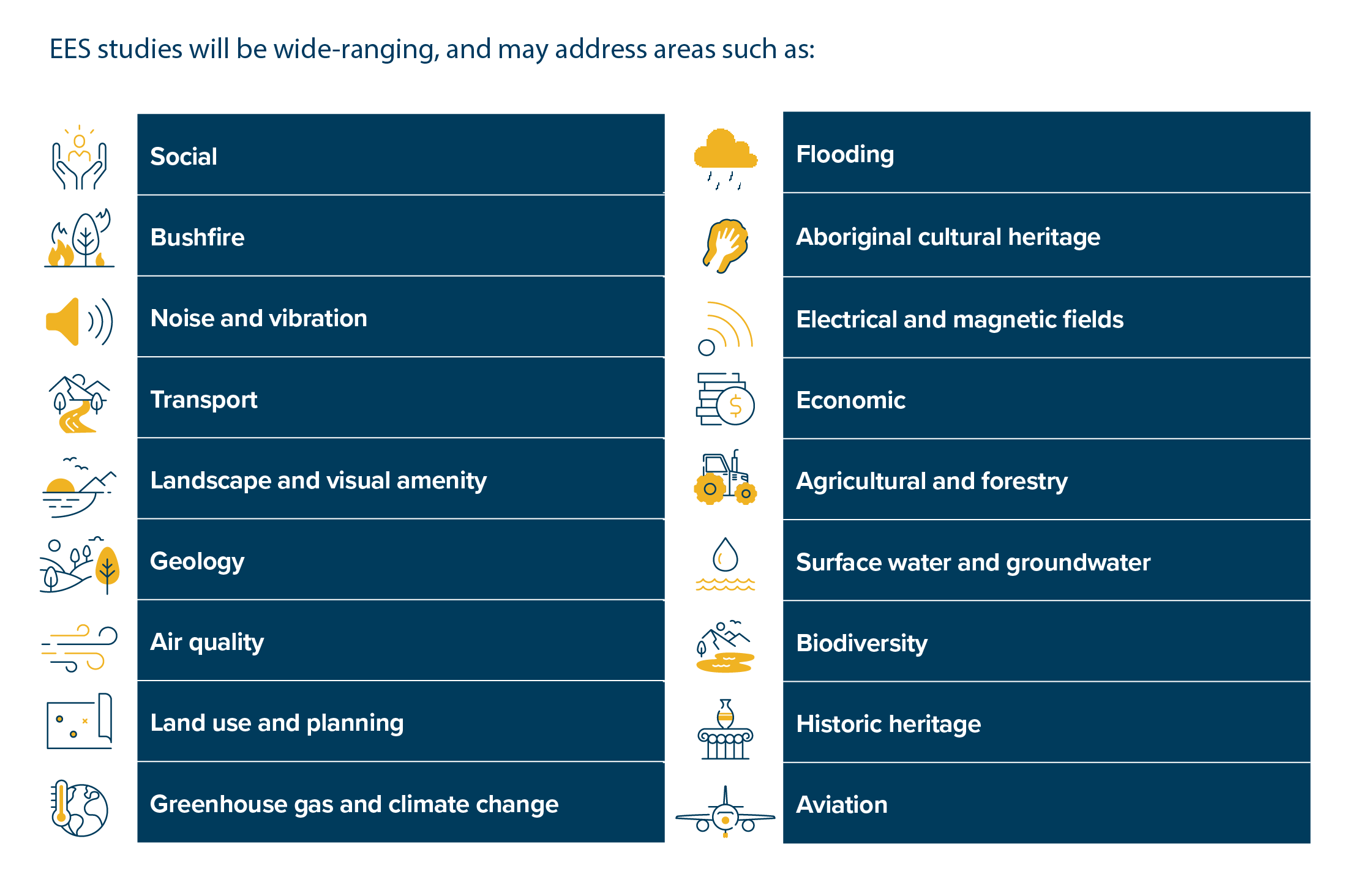Transmission Company Victoria (TCV) is undertaking field survey activities across the VNI West draft corridor. This work is important and builds our understanding of environmental considerations such as flora, fauna and the geology of the area.
Studies started in October last year and include non-invasive ground investigations and site walkovers to identify key wildlife habitat and vegetation, as well as geotechnical studies which involve drilling small boreholes to determine ground and soil conditions. These activities have mainly been carried out on public land, with the permission of relevant authorities.
Under the comprehensive Environment Effects Statement (EES) process over the next 18 months, TCV will carry out a range of more detailed technical studies including bushfire, cultural heritage and environmental assessments.
If we need to access private property, we will request consent from landholders. We will respect any biosecurity measures and follow farm rules, documented in a formal land access agreement with the property owner.
Survey activities on public land typically require Works Within the Road Reserve (WWRR) permits from local shire councils. These permits are arranged prior to works commencing. TCV does not anticipate major disruptions to local traffic while field investigations are underway; however, appropriate traffic management resources will be in use at each site.
Information on upcoming field surveys and assessments is available below.
| Municipality | Location | Expected window | Survey type |
|---|---|---|---|
| Gannawarra and Buloke | Across length of draft corridor |
29 July – 9 August 2024 |
Ecology |
Types of Field Survey Works
The list of matters to be investigated, and proposed studies for the EES, will be developed by the DTP in consultation with TCV and the TRG.
DTP will release a draft scoping requirements document for public comment, providing landholders and community members with the opportunity to provide feedback on the scoping requirements before they are finalised and issued by the Minister for Planning.
Community consultation is a key feature of the EES process. TCV’s ongoing landholder and community engagement has helped in refining the route for draft corridor, identifying public and private areas of interest for preliminary investigation.
Geotechnical field investigations are used to determine the current conditions of soil and rock features in the broader draft corridor region.
TCV is undertaking a program of geological field studies from March to May 2024. These investigations consist of drilling 27 boreholes, each about 100mm in diameter at depths of no more than 35 metres.
All geotechnical drilling-related field work will take place on public land and all required permits have been obtained from relevant local authorities. Crews will be visible on roadsides as investigations take place.
These sites are not indicative of where towers will be located. Once tower sites are determined, further geotechnical bores will need to be undertaken at each of those locations.
Once sites are identified as suitable for geotechnical drilling, engineering, ecological and cultural heritage specialists assess the area for any potential issues before any survey drilling activities begin.
Geotechnical investigations will take place within a fenced off work zone to ensure field investigations can be completed safely. There will be multiple vehicles at each survey site including traffic management, pumping and drilling equipment.
Each borehole is remediated directly after drilling activity concludes. Boreholes are backfilled in strict accordance with the Australian Drilling Industry Association’s guidelines.
Learn more about these surveys in TCV’s Geotechnical Investigations explainer.
High resolution elevation and geographic data is used to inform several key areas of activity for VNI West including route refinement, cultural heritage management plans and environmental impact assessments.
Light detection and ranging (LiDAR) technology is used to gather this data and aerial imagery. The LiDAR process involves a small fixed-wing plane flying between 500m and 1km above the ground, within survey areas of interest along the route of the draft corridor.
More information about the broader program of field surveys for VNI West can be found in the Land Access Technical Survey Activities fact sheet.
Questions about any aspect of VNI West can be directed to TCV via 1800 824 221 or emailed to enquiries@transmissionvictoria.com.au.

